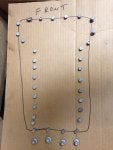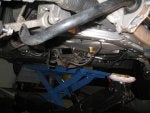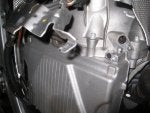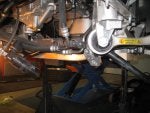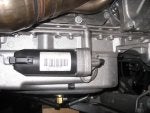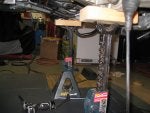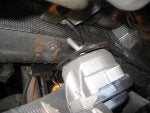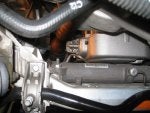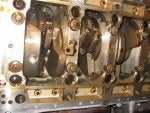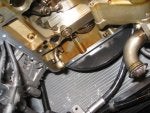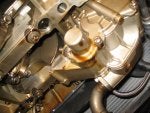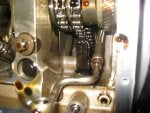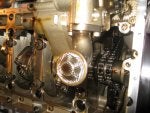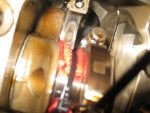the S85 V10 has what is called "fracture-split forged powdered metal connecting rods". These rods shrink after extended use from heat. Which means as they shrink ~ they put a tighter and tighter grip on the crank journal. This causes you to have unequal wear on the rod bearing as seen in this pic. It is a poor design... actually a terrible design.
As if we didn't have enough to worry about! I did a quick look around and it seems this type of con rod is being widely used because it is cheaper to make. That is disturbing by itself to read as a consideration for a part selected to use in a high-performance engine. I saw nothing about age-related shrinkage being an issue, but fatigue life may be somewhat lower than a comparable conventional forged rod. Metal fatigue could lead to distortion and bearing wear issues or catastrophic rod failure. Below is an excerpt of one study.
"During compacting, trapped oxygen in the powder results in porosity, decarb, and oxide penetration.
The density can vary within powder metal connecting rod.
Costly part density modification or infiltration is required to prevent powder metal defect.
From tensile tests and monotonic curves it is concluded that forged steel is considerably stronger than the powder metal.
Yield strength of forged steel is 19% higher than that for the powder metal. Ultimate tensile strength of forged steel is 8% higher than that for the powder metal.
Better fatigue resistance of the forged steel material, as compared with the powder metal material was observed.
Based on strain-life fatigue behavior, the forged steel provides about a factor of 7.
longer life than the powder metal in the high cycle regime.
Fatigue limit (Nf = 106 ) for powder metal is 79% of that for the forged steel."
Here is a link to another study:
Study Confirms Forged Crackable Steel Connecting Rods Cost Less and Perform Better Than Forged Powder Metal Rods
I don't know for a fact that S85 rods are forged powder, has anyone else confirmed this?:dunno:



